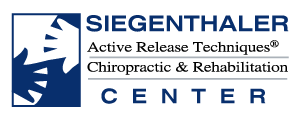Published April 12, 2013

Sports massage has long been the go-to therapy for runners seeking relief from aches and pains. And for good reason: A rubdown can improve flexibility, boost bloodflow, and release tension, helping runners recover from or sidestep injury. But because some chronically tight or stubbornly sore spots don’t respond quickly enough to basic massage, many therapists have turned to new bodywork tools and techniques to help their injured clients.
While alternative rehab methods, such as Active Release Techniques (ART) and Graston Technique, have been around for years, they are becoming increasingly available to everyday athletes. Like massage, they are forms of soft-tissue mobilization, a therapy that breaks up scar tissue and adhesions between connective tissue. When you sustain an injury or experience repetitive stress, the body lays down scar tissue in an attempt to heal the area. This fibrous web of tissue restricts bloodflow and disrupts communication between muscle and brain, causing the muscle to shorten and tighten. By using their hands or handheld tools, soft-tissue practitioners help break down crossed fibers and build mobility and strength, making the area less prone to injury.
“Massage is a great tool for relaxation and postrace recovery, but I’ve found that ART or Graston Technique is usually more effective at treating specific running injuries, particularly plantar fasciitis and IT-band syndrome,” says Shari Macdonald, physical therapist and director at the Running Injury Clinic in Calgary. After hearing success stories from other PTs, Brent Morrow, D.P.T., a physical therapist at Flagstaff Bone and Joint, started performing Graston Technique a year ago. “I see quicker results now and have fewer runners coming back,” Morrow says.
Macdonald says the various methods offer choices for clinicians—and runners—seeking treatment options. Case in point: Ultrarunner Keira Henninger, 36, from Capistrano Beach, California, spent three years rehabbing her hip, but she didn’t find full pain relief until she discovered Rolfing. Within two sessions she says she was pain-free, and she continues occasional maintenance treatments to stay that way. Any of the following rehab techniques could work for most any injury, so your best option will be based on your preferences and your access to local practitioners.
Active Release Techniques
What it is A combination of massage and stretching. Therapists apply tension with their thumb to tight or bundled tissue while they move a joint through its full range of motion.
How it works “When you take a muscle from a shortened position to full length, you can pick up precisely where the dysfunction is occurring and target it more fully,” says Chris Barney, D.C., a sports chiropractor and ART specialist in Irvine, California. Moving through range of motion retrains your body’s neuro-muscular pathways to function properly.
Who does it Physical therapists, chiropractors, massage therapists (find one at activerelease.com)
Astym
What it is A treatment that triggers tissue regeneration when handheld composite resin tools are run over the skin.
How it works Practitioners gently glide instruments along muscles and tendons to stimulate fibroblasts, cells that create new muscle fibers and other healthy tissue.
Who does it Physical therapists, athletic trainers (find one at astym.com)
Graston Technique
What it is A therapy that uses handheld stainless-steel tools to break down scar tissue and realign muscle fibers.
How it works The instruments allow therapists to get at small, harder-to-detect adhesions as easily as big ones and permit deep, efficient work. “I can accomplish in five to 10 minutes what used to take 20 to 30,” says Jackie Shakar, D.P.T., a physical therapist in West Boylston, Massachusetts, who uses Graston Technique on 95 percent of her runners instead of massage.
Who does it Physical therapists, chiropractors, massage therapists (find one at grastontechnique.com)
Rolfing Structural Integration
What it is Bodywork in which practitioners use their hands and forearms to unbind and stretch fascia while asking you to perform movements to release tension. A Rolfer may apply pressure to a hip flexor muscle with one hand, support your back with the other, while you extend your leg.
How it works Rolfing re-educates the mind and body to move with proper alignment. “Rolfing helps your body develop pain-free movement patterns,” says Carol Ann Agneessens, M.S., a Rolf Institute instructor.
Who does it Massage therapists, physical therapists, chiropractors, athletic trainers, strength and conditioning coaches (find one at rolf.org)
Trigger-Point Therapy
What it is A close cousin to sports massage, Trigger-Point Therapy relaxes tense, knotted fibers that radiate pain.
How it works Firm, stable pressure dissolves the knots. “Trigger points are precursors to strains and scar tissue,” says Kate Simmons, a massage therapist and Trigger-Point specialist in San Francisco. “So it’s best to address them before they lead to more serious pain or an injury.”
Who does it Massage therapists, physical therapists (find one at myofascialtherapy.org)
